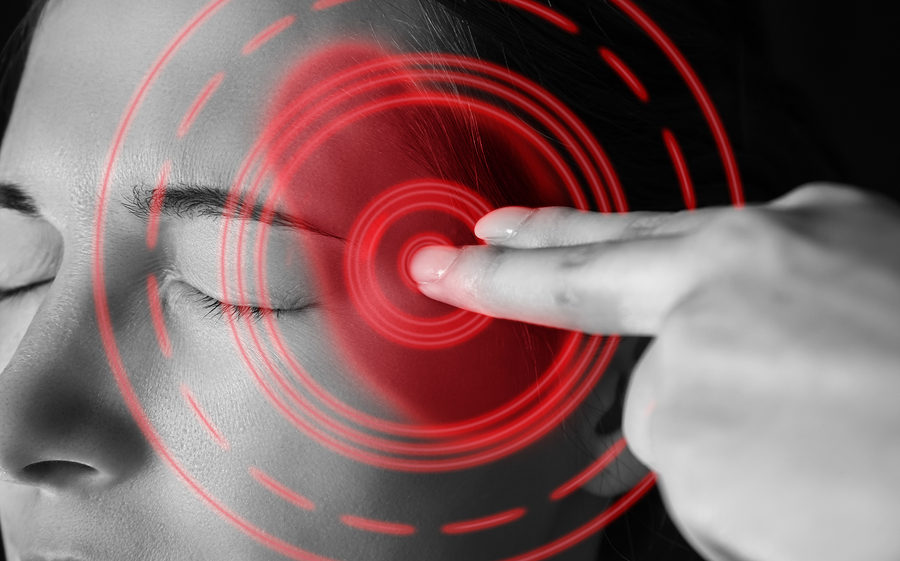The Pain Of Migraine
Half of the UK’s eight million migraine sufferers never seek medical attention. To mark Migraine Awareness Week, Lisa Salmon reveals why sufferers must seek help for a condition that’s so much more than ‘just a headache’
As one of the symptoms is a throbbing pain in the head, migraine is often dismissed as a headache.
But the fact that this common neurological condition is one of the world’s top 20 causes of disability, and an estimated 25 million days are lost from work or school every year because of it, shows that it’s so much more than a simple head pain.
Nevertheless, research has found that around half of Britain’s eight million migraine sufferers don’t seek medical help for their condition, and therefore don’t get an accurate diagnosis, or the best treatment.
And that’s why during this year’s Migraine Awareness Week (September 7-13), the Migraine Trust charity is encouraging people who think they have the condition to educate themselves about it.
Wendy Thomas, chief executive of the Migraine Trust, says: “Many people find migraine has a negative effect on their life and work, but don’t seek medical support.
“It’s important to get a reliable diagnosis as soon as possible and proper treatment. We hope Migraine Awareness Week will help sufferers through information that enables them to cope with the condition.”
The most common symptoms of a migraine attack include a throbbing headache, sensitivity to light and noise, nausea, vomiting and lethargy.
In some people, changes in the cortex area of the brain cause sight abnormalities, such as dark or coloured spots, sparkles or stars, and zigzag lines. Numbness or tingling, weakness, and dizziness or vertigo can also occur.
Speech and hearing may be disturbed, and sufferers have reported memory changes, feelings of fear and confusion, and more rarely, partial paralysis or fainting.
Such neurological symptoms are called the ‘aura’ of migraine. In adults, they usually happen before the headache itself, but in children, they may occur at the same time.
Consultant neurologist Dr Fayyaz Ahmed, a trustee of the Migraine Trust, says migraine can vary hugely in its intensity: it can be so mild that people can carry on with their normal activities, moderate with minimal effect on quality of life, or severe.
The severe form affects around 25% of migraine sufferers and may be very disabling, often forcing sufferers to sit still in a quiet, darkened room to avoid the potential nausea and vomiting caused by physical activity, and making them extremely sensitive to light and sound.
“They are unable to function and carry on with their activities of daily living,” says Dr Ahmed.
“Some people suffer from migraine so frequently that it gives them a headache almost every day.”
Such frequent attacks are labelled chronic migraine, which affects around 5% of people and is the most disabling form of the condition.
“Migraine is not just a headache, it has other symptoms and has a major impact on life,” stresses Dr Ahmed.
“Those who don’t take advice feel the doctor won’t be able to help. So they go ahead and buy painkillers off the shelf and carry on treating themselves. A lot of them require preventive treatment but they treat the pain without getting the diagnosis.
“The common perception is that doctors wouldn’t take their complaint seriously.”
But while there is no cure, the condition can be managed with the correct medication, trigger avoidance and lifestyle changes.
Dr Ahmed says doctors would explain what the headache was, ensure there was no serious underlying cause, and probe into the common migraine triggers, which can include foods such as cheese, chocolate, red wine, citrus fruits and juices, plus hormonal factors in women.
“Lifestyle issues such as eating meals at irregular intervals, fast food, drinking caffeine drinks in excess, lack of rest and working non-social hours are also triggers,” he adds.
He says those diagnosed with migraine will be given appropriate acute and preventive medications, and will be advised of the potential problems with off-the-shelf painkillers.
“Some of them contain codeine, which is quite addictive, and a common cause of medication overuse headaches,” he warns. Such headaches can occur almost every day, after being sparked by people trying to manage their symptoms with over-the-counter painkillers.
Preventative medication that may be prescribed by a doctor includes anticonvulsants, antidepressants, antihistamines, beta-blockers, and anti-inflammatory drugs, which have all been shown to help prevent migraine attacks.
People with severe migraines may be treated with migraine-specific drugs called triptans. Strong painkillers, anti-nausea drugs and even sedatives may also be prescribed, but the medication needed very much depends on a patient’s specific symptoms.
In addition, Botox injections, which can help relax muscles, may be used to help relieve chronic migraine.
Despite the fact that migraine is the most common neurological condition in the developed world, more prevalent than diabetes, epilepsy and asthma combined, the cause is still not known. What is known, however, is that most sufferers are genetically predisposed to the condition, and it’s more common in women, with 18% of them suffering with migraines, compared to 8% of men.
Dr Ahmed explains that there is an ongoing debate about the exact cause of migraines, although he points out: “The most understood is that it’s genetic and you blame your parents for getting it.”
He says the mechanism of the pain remains unknown, although there are two distinct theories, vascular and neural, which both lead to the constriction and dilation of blood vessels, causing the release of pain-producing chemicals.
“In my opinion, both mechanisms are involved,” says Dr Ahmed, “and whatever the generation mechanism, the ultimate result is pain, due to the chemicals that could produce some form of inflammation.”
Brain imaging studies have also shown there’s a ‘migraine generator’ in the brain’s hypothalamus region. This triggers the start of migraine with neural and vascular activation, leading to the release of chemicals.
“There may be many reasons for the migraine,” says Dr Ahmed.
“In my opinion, people are born with a threshold of developing headache, and this threshold is set up because of the migraine gene they’ve inherited.
“Those with a lower threshold can develop headaches easily with even a small trigger, and those with a high threshold are fairly resistant, therefore very strong triggers, such as a hangover, can bring headaches.”
He says medicines used for prevention work by increasing the threshold of the person, and thus minimising headache frequency and severity.
Migraine typically affects people from the teenage years and then throughout life, and attacks can be episodic or chronic in frequency.
The Migraine Trust points out that some sufferers only seek help when their migraines have a spiralling negative effect on their life, such as reducing their attendance at work. Indeed, research by the charity has found that 34.3% of migraine sufferers face difficulties or discrimination at work because of their condition.
TOP TIPS TO BEAT MIGRAINE
:: The Migraine Trust recommend starting a migraine diary to record symptoms, their duration and frequency – also any medication you take and if this helped.
:: Take the migraine diary to your GP, where you might seek a firm diagnosis or get advice on medication to prevent attacks and/or treat symptoms.
:: Talk to friends and family about your migraine and its effect. With one in seven people suffering migraine and the condition running in families, they might have migraine too.
:: For more information, visit www.migrainetrust.org/
:: During Migraine Awareness Week, Meningitis Trust trustee neurologist Dr Mark Weatherall will answer questions on Twitter, from 2-3pm on September 9. Tweet questions to @MigraineTrust and use #AskMigraine
What experience have you had as a migraine sufferer?
Latest posts by Sally - Silversurfer's Editor (see all)
- Freezing this Christmas, a charity single could hit the number one spot - December 20, 2024
- Theatre tickets from £10 for 50+ London shows with See It Live in 2025 - December 19, 2024
- Should Waspi women be entitled to compensation? - December 17, 2024
- What was your favourite childhood toy? - December 17, 2024
- It’s never too late to play bridge - December 15, 2024




















